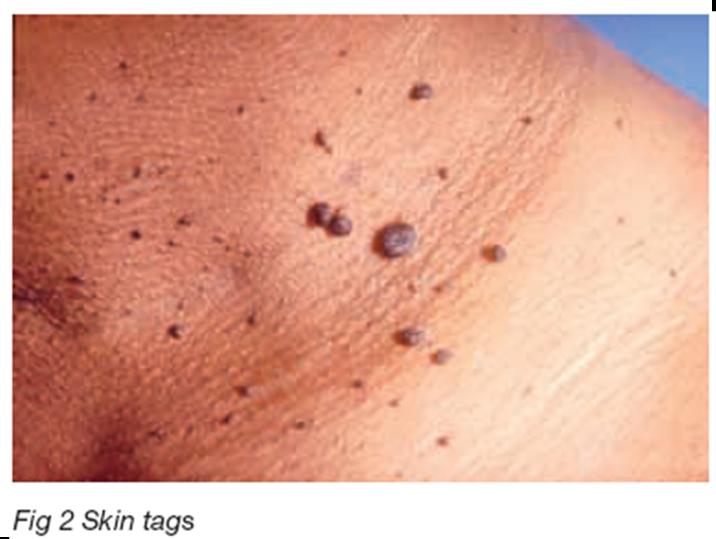
Skin tags (Fig 2) are harmless skin-coloured or brown growths, which commonly occur on the neck, underarms, groin, and eyelids. They vary in size from less than 1mm to as large as 10mm. They are usually asymptomatic and often occur as multiple lesions.
Treatment
Skin tags can be easily removed, if so desired, by snip excision and electrocautery. This is done under topical anaesthesia such as using EMLA cream. After the surgery, there will be superficial wounds which heal in 4 to 7 days. There may be some post inflammatory darkening after the wounds heal, but this will usually fade with time, over the next few weeks.